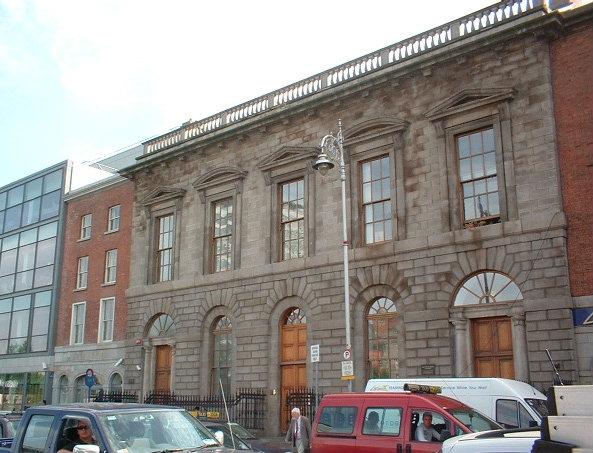Reading Siobhán Kilfeather’s Dublin: A Cultural History, especially chapter four, discusses the shift from a union to the famine period during the depression or economic decline in Ireland. Kilfeather also discusses Emmet’s Rebellion and the grand opening of a Zoo in Phoenix Park (September 1831), but what stood out to me most was the mentioning of Fredrick Douglass at Conciliation Hall on September 1845.

“On 29 September 1845 in Dublin, he attended a meeting of the Repeal Association at Conciliation Hall, addressed by Daniel O’Connell and wrote about it to William Lloyd Garrison. The letter was published in The Liberator, 24 October, 1845”.
-Siobhán Kilfeather
Visiting Dublin during the famine, Fredrick Douglass experienced the misery of the Irish people. He includes that in America, it was believed that the press had exaggerated the state of the Irish people during this depression. But it was much worst than what he had heard. Douglass having experienced extremely harsh living conditions as a slave, compares the African slave misery to what the Irish locals were going through. In a letter to Garrison from Scotland Douglass describes Dublin;
“I speak truly when I say, I dreaded to go out of the house. The
streets were almost literally alive with beggars, displaying the greatest wretchedness—some of them mere stumps of men, without feet,
without legs, without hands, without arms—and others still more
horribly deformed, with crooked limbs, down upon their hands and
knees, their feet lapped around each other, and laid upon their backs,
pressing their way through the muddy streets and merciless crowd,
casting sad looks to the right and left, in the hope of catching the eye
of a passing stranger—the citizens generally having set their faces
against giving to beggars…The spectacle that affected me most, and
made the most vivid impression on my mind, of the extreme poverty
and wretchedness of the poor of Dublin, was the frequency with
which I met little children in the street at a late hour of the night,
covered with filthy rags, and seated upon cold stone steps, or in
corners, leaning against brick walls, fast asleep, with none to look
upon them, none to care for them. If they have parents, they have
become vicious, and have abandoned them. Poor creatures! they are
left without help, to find their way through a frowning world—a
world that seems to regard them as intruders, and to be punished as
such”
-Frederick Douglass
We can truly visualize the heartbreaking state of the Irish people (approximately 1.1 million and the ones in extreme poverty) during the famine. The mentioning of missing limbs on people or the helpless starving children left to die, Douglass sympathizes with the people of Dublin, having lived in similar conditions. Frederick Douglass presents in this letter what some might believe as the “doomsday”, an apocalypse of some sort with a dark gloomy world. Similar to Bram Stoker’s Dracula. Though the novel takes place in England, Stoker (who lived in Dublin) experienced the famine era and the dark apocalyptic theme seems to have influenced his vampire fantasy novel.
